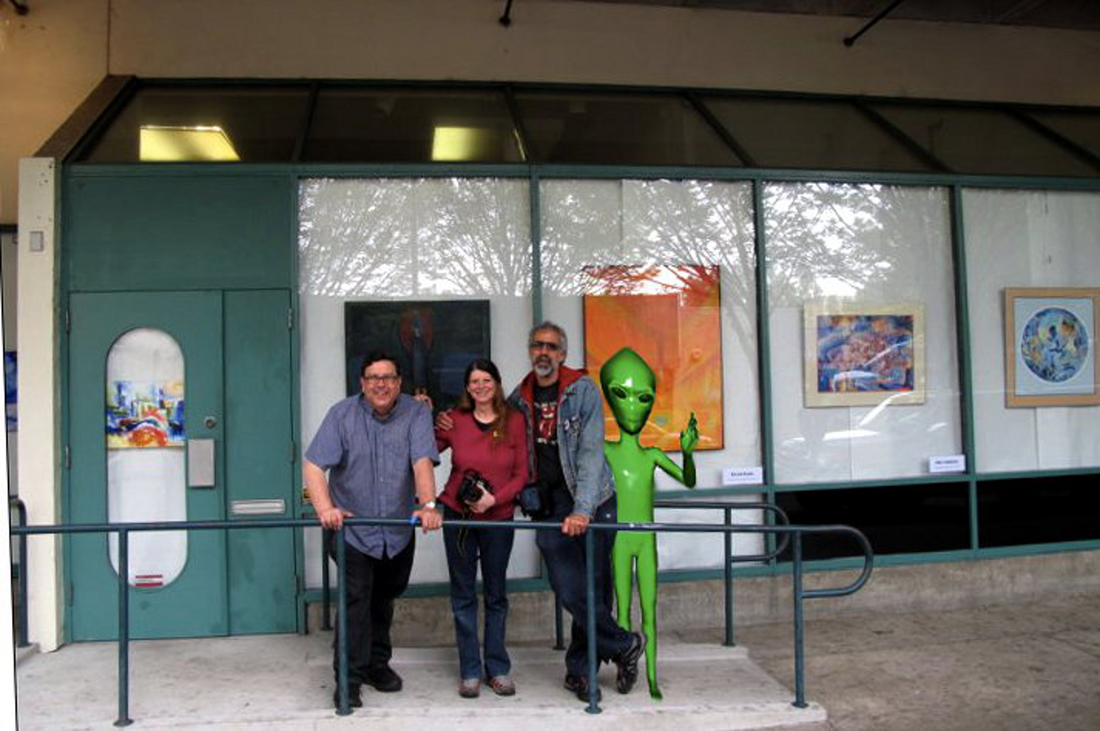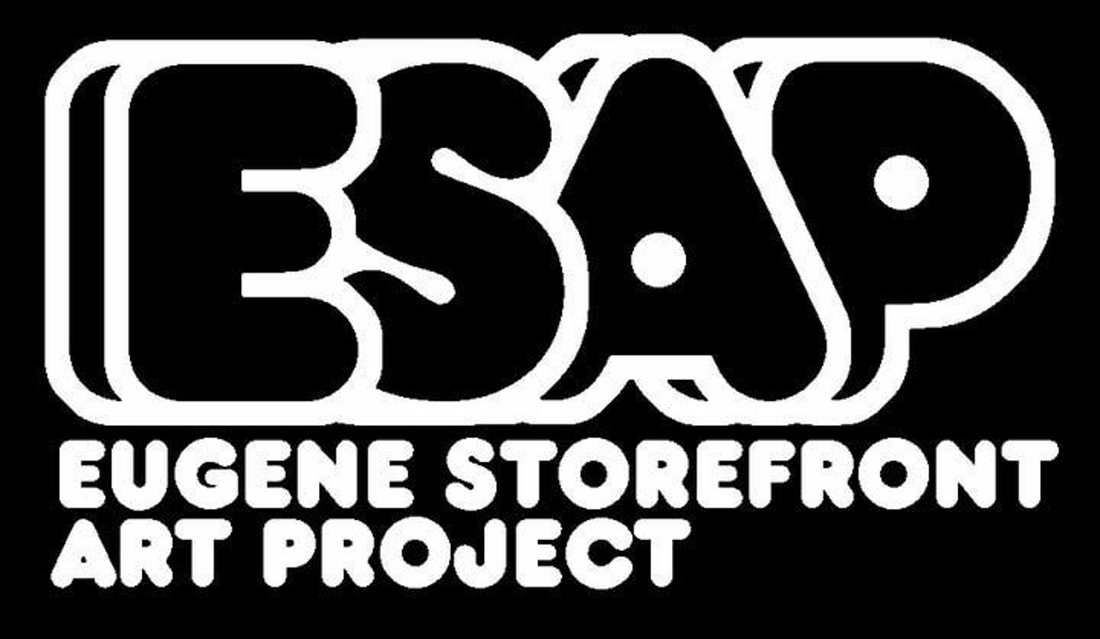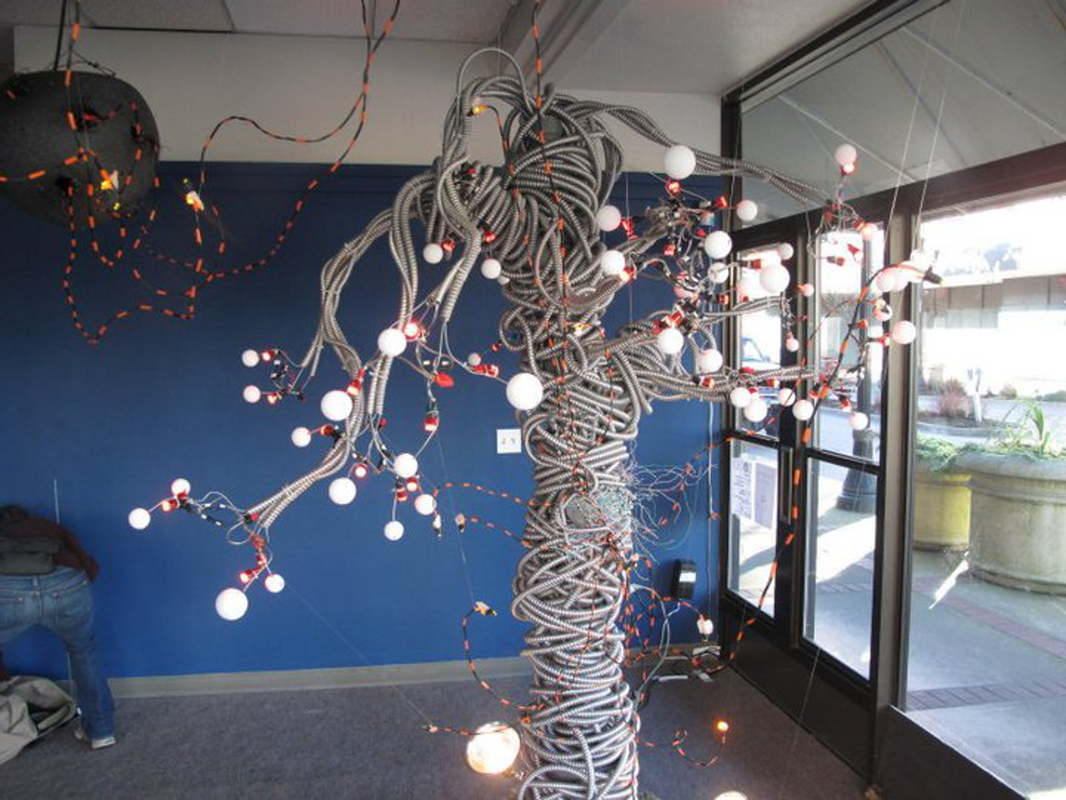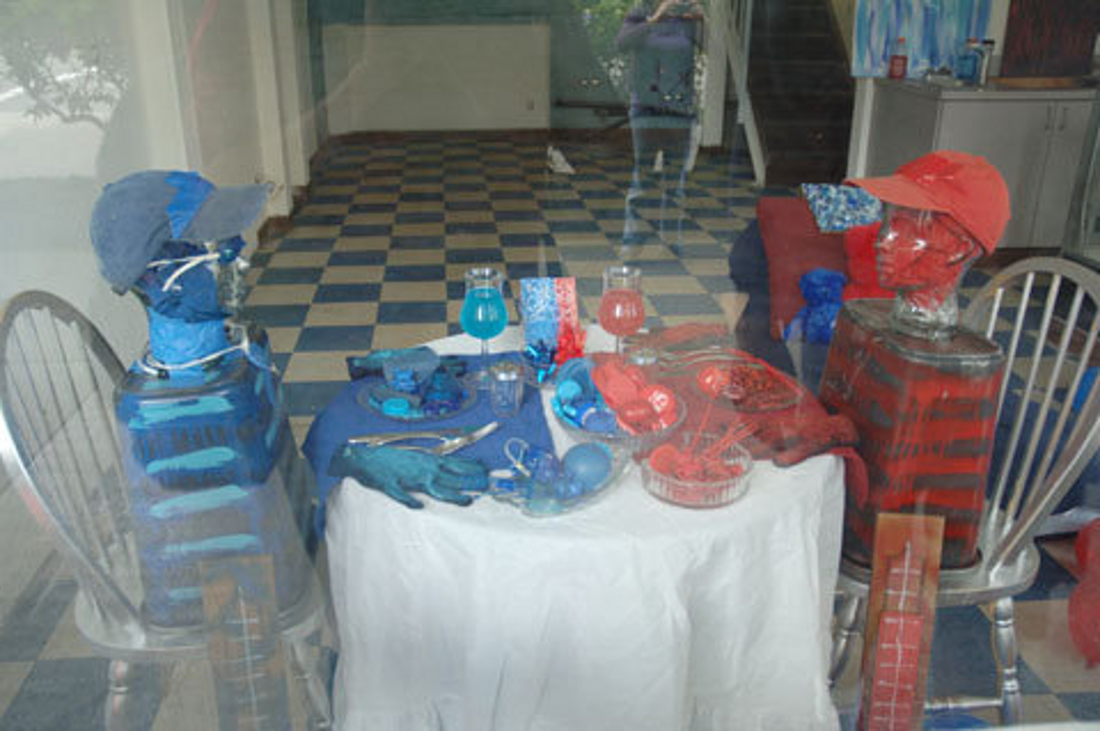Eugene Storefront Art Project
Eugene Storefront Art Project: A New Breed of Pop Up Gallery
by EAM Staff After a terrible turn out for an art show in Eugene, Oregon in late November, 2009, Paula Goodbar blogged about a possible solution. “We have got to do something about this block in downtown Eugene. It would help if the press would do stories of the events that are happening instead of only concentrating on the negative. If we bring the people down there more than once a month, maybe someone would want to lease an empty storefront. How about putting art in the empty store windows? Give people something to look at, and they may just take a walk down the block toward New Zone, Shaw-Med and the Broadway. ...Send me ideas and let's do something!” On January 3, 2010, Marc Gunther took matters into his own hands and posted a new photo gallery on Facebook of empty storefronts in Eugene. While he was out taking pictures, a man asked him if he was going to do something about the empty storefront. He stammered, “Uh, maybe.” The following day, out of frustration, he posted the following plea via Facebook, “Why doesn't somebody form a group to do something with those empty buildings?” Eugene's Mayor Kitty Piercy posted “What about you?” Within a few days, Marc met with Peter Herley to discuss the project and decided that Marc, Peter and Paula would form a group. They tentatively named it the Eugene Storefront Art Project and created a Facebook group. Since ESAP's founding, it has been a battle with the elements, but not without reward. While some folks in Eugene feel that the storefront installations and pop-up shows are furthering the demise of local art galleries, in truth, they have nothing to do with that. Upon closer investigation, the closed galleries in town have had many other issues — many to do with the economic issues the city and state are facing. In fact, ESAP is in the process of putting a presentation together to show to the Rotary, the City Club and other organizations about how their storefront installations have opened up dead spots in downtown and allowed for positive attention, which has led to spaces being leased. Two of the elements they seem to battle most are apathy and negativism. “A lot of artists are reserved about putting their art in storefronts. You would think that a young artist would jump at the chance to display their art, but many are simply lazy.” They have met some resistance from property owners to the idea that art brings commerce to a city. They constantly need to remind city officials and civic leaders that ESAP is a serious organization. “ESAP is enhancing and creating downtown art zones that compliment the galleries, and many new artists get their start with our projects. We would like ESAP to bring together artists of all mediums in an organization that has members made of all the other arts groups in town. We are not exclusive, and we are selling art, something that gallery owners need to do to stay afloat.” One of the things working in favor of ESAP is the University of Oregon, located in Eugene. They have been able to meet with students who are part of the Emerging Leaders in the Arts Network, netting some involvement from interested students. “We have done a few installations with University of Oregon art students, the alumni association and other students groups. A lot of our members are U of O students, and we hope that any new students will get involved, attend our meeting and events and submit art.” ESAP stands apart from many nonprofit art organizations in Oregon, in that they do not jury art. To enter, you have to meet a limited criterion, pay $5 for a yearly membership and wait for a chance to show. For more information check out their website: ESAP |




 DIASPORA*
DIASPORA*